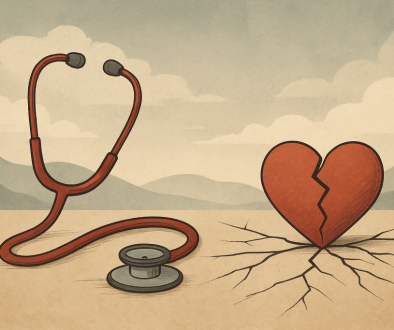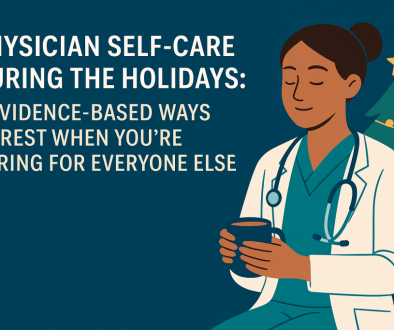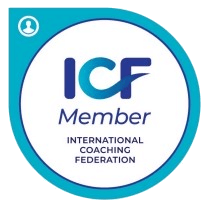7 Unconventional Ways Doctors Are Creating Autonomy Without Leaving Clinical Practice
Physician Autonomy and Burnout
The irony is profound. The very people who dedicate their lives to healing others are breaking under the weight of a healthcare system that often seems designed to minimize autonomy and crush the human spirit. The evidence is overwhelming: Physician burnout has reached epidemic proportions, with nearly 60% of doctors reporting emotional exhaustion, depersonalization, and a diminished sense of personal accomplishment. Behind the stoic white coats lies a profession in deep distress.
What began as a calling built on compassion and curiosity has morphed into a marathon of administrative burdens, electronic records, and less time with patients. The core reasons many of us pursued medicine: to help others, challenge ourselves by solving complex problems, and to make a living have been eroded. They are replaced by systemic barriers that harm patients, prior authorizations, and decreasing reimbursement.
The consequences extend far beyond provider wellbeing. When physicians burn out, patient care suffers. Medical errors increase, and empathy diminishes. Physicians are human. We can only put on a brave face for so long. Many feel we are faced with a binary choice: endure the broken system or leave clinical practice entirely.
But what if there’s a third path?
The Real Meaning of Freedom in Medicine
When I speak with burned-out physicians, most want to find a way to continue practicing. They still love caring for patients and feel a profound sense of duty. Yet, they also recognize that continuing on their current path is unsustainable. When I ask what needs to change, the number one answer might surprise you: “I want more control. I want more autonomy. I want freedom.”
For many, it’s hard to imagine a path that provides the freedom they seek and a reliable income. So they seek coaching to find a way out. But what if the solution isn’t abandoning medicine but reimagining its practice? What if the path to freedom lies not in walking away from patients, but in finding innovative ways to serve them better while reclaiming your professional autonomy and personal well-being?
Across the country, physicians are rejecting the false dichotomy of suffering in silence or abandoning their calling. They are pioneering unconventional approaches that are as diverse as they are inspiring. In this article, we’ll explore seven of these transformative strategies. These are real-world solutions from doctors who faced the same burnout you might be experiencing now. Their journeys offer a practical roadmap for reclaiming the joy of medicine on your own terms.
1. Micropractice: The Art of Medical Minimalism
Imagine a medical practice with no staff, minimal overhead, and appointments that last as long as you and your patient need. This isn’t a fantasy; it’s the micropractice model, and it’s revolutionizing how physicians approach patient care.
At its core, the micropractice philosophy embraces radical simplicity. By stripping away the complexities of traditional practice models, physicians create intimate, sustainable practices that prioritize the doctor-patient relationship.
The financial model is compelling. With overhead reduced to as little as 25-35%, physicians can maintain a healthy income while seeing significantly fewer patients. This creates the freedom to spend 30, 45, or even 60 minutes with each person, transforming the clinical encounter from a rushed transaction into a meaningful consultation.
The transformation goes beyond logistics. Physicians who embrace this model describe a profound shift in their relationship with medicine—reclaiming autonomy, eliminating productivity pressures, and restoring the joy of care.
2. Time Banking: Reimagining the Currency of Your Work
The relentless pressure to maximize RVUs (Relative Value Units) has become a defining characteristic of modern medicine. The drive to quantify clinician work has resulted in a system that prioritizes volume over quality and leaves providers feeling like cogs in a machine. Time banking offers a revolutionary alternative. It is a system that formally recognizes and rewards the invisible labor that makes great medical care possible.
In its essence, time banking creates an alternative economy within healthcare organizations where physicians earn credits for activities devalued in conventional compensation models. These include:
- Mentoring medical students
- Committee work
- Cross coverage or call shifts
- Developing quality improvement initiatives
- Participating in community outreach.
The credits become a form of currency that can be exchanged for tangible benefits like protected time for research, additional administrative support, schedule flexibility, or compensation bonuses.
The power of time banking is its simplicity and flexibility. Activities that are credited can be individualized to align with physicians’ intrinsic values. Rather than forcing doctors to choose between meaningful professional activities and financial security, it creates a formal structure that honors both. The system acknowledges a fundamental truth: medicine is not just about profit. It is about the constellation of activities that advance healthcare quality, education, and community wellbeing.
The implementation of time banking varies across institutions, from sophisticated digital platforms that track and manage credits to simpler systems managed through existing administrative structures. The key is creating transparency around which activities earn credits, how they can be redeemed, and ensuring equitable access for all physicians regardless of specialty or seniority.
“Time banking challenges the dominant narrative that provider value is measured solely by RVUs.”
Instead, it recognizes the multidimensional contributions that make healthcare work. For many providers, this validation of their broader identities as educators, mentors, innovators, and community leaders restores a sense of purpose and meaning that transcends the transactional aspects of clinical care.
For physicians feeling trapped by productivity demands, advocating for time banking within their organizations can be a powerful step toward reclaiming autonomy. Starting the conversation requires data on both the visible and invisible work providers perform, examples of successful implementations elsewhere, and a compelling case for how the system benefits not just doctors but the entire healthcare ecosystem – from improved retention and reduced burnout to enhanced institutional quality and innovation
3. Job Crafting: Sculpting Your Ideal Role from Within
Not every path to freedom requires building something new from scratch. Job crafting, or deliberate reshaping of one’s role to align better with strengths, passions, and values is a powerful strategy for physicians to transform their careers without leaving their current positions.
The concept of job crafting emerged from organizational psychology and challenges the assumption that jobs are fixed entities. Instead, it recognizes that work roles are malleable and can be actively redesigned through intentional adjustments to tasks, relationships, and cognitive approaches. For physicians, this process involves systematically examining their responsibilities and identifying opportunities create a more satisfying job.
The process begins with reflection. If job crafting intrigues you. Start the process now by asking yourself the following questions:
- What activities give you energy?
- Which activities are soul-sucking?
- What are your core values?
- What are your strengths?
Approach to Job Crafting
From this foundation, physicians can develop specific crafting strategies, prioritize changes based on feasibility and impact, and systematically implement modifications while monitoring their effect on wellbeing and satisfaction. Here are a few different ways to think about job crafting:
- Task crafting involves modifying the scope or nature of responsibilities. This might mean negotiating to spend more time on complex cases that provide intellectual stimulation, developing a specialized clinic within a general practice, or integrating teaching opportunities into clinical work. The key is identifying which aspects of medicine energize rather than deplete, then strategically building more of those elements into daily practice.
- Relational crafting focuses on transforming workplace interactions and collaborations. Physicians might cultivate strategic partnerships with colleagues whose skills complement their own, establish mentoring relationships that provide mutual benefits, or restructure team dynamics to maximize strengths across the group. These connections create support systems that buffer against stress while enhancing professional satisfaction.
- Perhaps most powerful is cognitive crafting or reframing how one perceives and finds meaning in their work. This might involve reconnecting with the deeper purpose behind medicine, recognizing the unique value one brings to patient care, or finding significance in aspects of practice previously viewed as mundane. This perceptual shift doesn’t change external circumstances. Rather, it transforms the internal experience of practicing medicine.
The beauty of job crafting is its accessibility. While formal role changes often require institutional approval, many aspects of job crafting can be implemented through individual initiative. Small, incremental changes accumulate over time, gradually transforming the physician’s experience without requiring dramatic career moves.
4. Niche Practice Development: The Power of Specialized Focus
Niche development allows physicians to focus in on a specific problem,condition, population, or treatment approach and build a career around that. This path can offer:
- Greater professional satisfaction
- Higher income potential
- Referral-based growth
The strategy starts with indentifying a need that aligns with personal passion and expertise. Weight loss clinics are a perfect example. The key is finding a focus area narrow enough to differentiate the yourself but broad enough to sustain a viable practice.
What makes niche practice development particularly powerful is how it transforms the physician’s market position. Rather than competing as an “ just another provider” in an oversaturated field, the niche specialist becomes a sought-after expert offering solutions unavailable elsewhere. This shift alters the power dynamics of practice. Patients seek out the physician rather than the reverse, referrals come based on unique expertise, and the pressure to see high volumes diminishes as the value of each encounter increases.
Growing a Niche Practice
Growing a niche practice happens in stages. It starts with developing specialized knowledge and skills through targeted education, mentorship, and experience. This expertise is then leveraged to build a reputation through speaking engagements, publications, professional network development, and strategic use of social media to establish thought leadership. As recognition grows, practice patterns gradually shift to accommodate more cases within the specialty area.
Benefits of a Niche Practice
The financial implications can be significant. Niche specialization often allows physicians to charge higher rates, attract patients willing to pay out-of-pocket for specialized services, or develop additional revenue streams through consulting, education, or product development related to their area of expertise. This economic leverage creates freedom to see fewer patients , control scheduling more effectively, and potentially reduce administrative burdens.
Beyond practical benefits, niche development provides a changes for personal and professional growth. Becoming an expert in a focused area creates opportunities for continuous learning, problem-solving, and innovation that combat the “ I am busy and bored.” feeling many experience in routine practice. The specialized knowledge also fosters deeper patient relationships built on shared understanding of complex conditions and collaborative approaches to management.
For physicians considering this path, success requires strategic thinking and an interest in the niche area. The niche must align with genuine interest to sustain the commitment required for expertise development. It must also be selected with awareness of market dynamics, competitive landscape, and long-term viability in an evolving healthcare environment.
5. Collaborative Practice Models: Redefining Professional Teamwork
Burnout thrives in isolation. Collaborative models flip the script by distributing responsibility among team members—APPs, nurses, behavioral health, pharmacists, and more.
Examples include:
- Integrated care centers
- Group practices with shared ownership
- Formal job-sharing among physicians
At the heart of collaborative practice is a fundamental shift in how medical care is conceptualized and delivered. Rather than centering everything around the physician, these models distribute clinical responsibilities across team members according to their training, expertise, and scope of practice. Advanced practice providers, registered nurses, pharmacists, behavioral health specialists, and other professionals become partners in care rather than ancillary team members. Each providers contributes their unique skills to comprehensive patient care.
Freedom from Collaborative Practice Models
The autonomy these models provide comes through several mechanisms. First by distributing clinical responsibilities, each provider can focus their time and energy on the aspects of care that require their expertise. This decreases cognitive overload and increases professional satisfaction. The shared decision-making inherent in true collaboration distributes the emotional burden of difficult cases, creating psychological safety and reducing isolation. Second, these structures create flexibility that conventional practice models cannot. They allow for part-time employment, sabbaticals, or variable schedules that accommodate changing life circumstances without abandoning clinical work entirely.
Finances of Collaborative Practice
By leveraging team members with different skill sets and compensation requirements, these models are more efficient and improve the quality of care. The shared overhead of group practices reduces individual financial pressure, while the coverage provided by partners creates freedom to step away without practice disruption. For many physicians, this translates to greater income stability with less personal sacrifice – a combination rarely found in traditional practice settings.
Building successful collaborative practices requires a mindset shift. Physicians be comfortable letting others take the lead, develop clear communication systems, establish explicit decision-making processes, and create compensation structures that fairly reflect contributions. The transition often involves unlearning hierarchical patterns ingrained during medical training and embracing more egalitarian approaches to professional relationships.
For physicians seeking more autonomy without leaving clinical practice, collaborative models offer a particularly accessible path. Unlike some strategies that require building entirely new structures, collaboration can often be initiated within existing practice settings through incremental shifts in how teams function and how responsibilities are allocated. The journey starts with identifying potential partners whose skills and values complement one’s own, then co-creating structures that maximize everyone’s contributions while respecting individual needs for autonomy and flexibility.
6. Technology-Enhanced Practice: Leveraging Digital Tools for Autonomy
Technology, used wisely, can give you time and peace of mind. Solutions include:
- Asynchronous Care: Messaging platforms that eliminate constant interruptions.
- Remote Monitoring: Manage chronic illness proactively.
- AI and Automation: Reduce documentation and scheduling burdens.
- Virtual Practice: Offer care remotely, from anywhere.
Technology isn’t the enemy. When aligned with your values, it can be your greatest ally.
The physicians who successfully leverage technology for freedom share common approaches. First, they maintain focus on the problems they’re solving rather than the novelty of the tools themselves. Second, they prioritize technologies that enhance rather than replace human relationships. Third, they implement changes in a step wise manner that allows for adaptation and refinement and avoids disruptive overnight changes. Perhaps most importantly, they maintain agency in technology decisions, and actively choose tools aligned with their values rather than passively accepting whatever systems are imposed upon them.
For doctors feeling trapped by conventional practice limitations, technology offers a particularly accessible path to greater freedom. Unlike strategies requiring major practice restructuring, many digital tools can be adopted incrementally within . The journey begins with clarifying pain points, researching solutions specifically addressing those pain points, and starting with small-scale implementation of tools with the potential for significant impact on daily experience.
7. Portfolio Careers: The Power of Professional Diversification
The traditional physician career path resembles a monorail or a single track of clinical practice stretching from residency to retirement. Who says you have to be only a clinician? A portfolio career creates autonomy by blending clinical work with:
- Teaching
- Consulting
- Writing
- Entrepreneurship
This approach offers:
- Economic Security: Multiple income streams.
- Flexibility: Varied, adaptive schedule.
- Burnout Prevention: Balance between roles.
- Personal Growth: Use your full range of skills.
Often referred to as “side gigs,” the non clinical careers options are almost limitless. They reflect individual interests and strengths. Some combine clinical work with teaching roles at medical schools or residency programs. Others add consulting positions with healthcare organizations, technology companies, or pharmaceutical firms. Some develop expertise in non-clinical domains like healthcare administration, informatics, or health policy. Still others pursue entrepreneurial ventures, creative projects, or roles in global health. The key isn’t the specific components but the intentional diversification of professional activities and identity.
Tips for A Successful Side Gig
Developing a successful portfolio career requires a well thought out plan. The process start with identifying core values, unique strengths, and the activities that create energy rather than depleting it. From this foundation, map potential portfolio components, considering how each aligns with personal priorities and how they collectively create a coherent professional identity.
The implementation typically unfolds gradually, with new elements added incrementally as capacity and opportunity allow. This evolution requires developing boundaries and time management strategies that prevent overcommitment. It also requires physician to feel comfortable starting over and asking for help. Just because you are an expert surgeon does not mean you are an expert marketer.
For physicians feeling trapped in conventional practice models, portfolio careers are potential path to greater freedom. Unlike strategies requiring complete practice restructuring, side gigs start with small steps like taking a part-time teaching position, a consulting project, or a leadership role within an existing organization. Each addition creates new experiences andopens doors.
Creating Autonomy and Reclaiming Your Career on Your Terms
These seven strategies aren’t just theory—they’re tested, real-world paths toward reclaiming autonomy in your life. Whether through simplicity, collaboration, tech, or diversification, each offers a way to stay in medicine while making it sustainable again.
Your path may start small, but it starts with a choice: to stop accepting burnout as inevitable and start building the future you deserve.
Ready to reclaim your time, energy, passion, and career?
At The Developing Doctor, we believe physicians deserve careers as healthy as the patients they serve. We’ve helped hundreds of doctors do just that—with coaching, strategy, and community support.
Schedule a free consultation to explore how coaching can help you rediscover joy and freedom in clinical practice.





